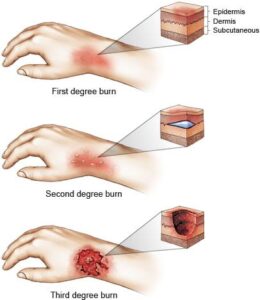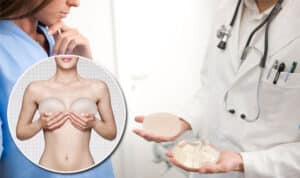What factors should I consider when choosing a surgeon for my tummy tuck?
A tummy tuck, medically known as abdominoplasty, is a surgical procedure aimed at enhancing the abdomen’s appearance. This process involves removing excess skin and fat while tightening the abdominal muscles to create a smoother and firmer profile. Ideal for individuals struggling with body image after significant weight loss or childbirth, it offers both cosmetic and functional benefits by improving posture and reducing certain health risks associated with abdominal fat. Despite its popularity, understanding the procedure’s implications, recovery time, and potential risks is crucial for anyone considering this transformative journey.
Understanding Tummy Tuck Procedures
Full vs Mini
A tummy tuck can be either full or mini. Each targets different needs. A full tummy tuck addresses the entire abdomen. It removes excess skin and fat. It also tightens muscles across the belly.
In contrast, a mini tummy tuck focuses below the navel. It’s less invasive than a full one. Ideal for those with lower belly issues only.
Procedure Steps
The steps of a tummy tuck procedure are systematic. First, anesthesia is administered for comfort during surgery. Next, an incision is made; its size depends on whether it’s a full or mini tummy.
Skin is then lifted to repair muscles if needed. Excess skin gets removed before closing the incisions neatly.
Risks and Complications
Like any surgery, tummy tucks come with possible risks:
-
Infection
-
Bleeding
-
Scarring
-
Complications from anesthesia
It’s vital to discuss these with your surgeon beforehand.
Choosing a qualified surgeon reduces these risks significantly.
Importance of Choosing a Certified Plastic Surgeon
Reduced Risks
Choosing the right plastic surgeon is crucial. A certified surgeon means lower risks. They have passed rigorous exams and training. This ensures they can handle unexpected situations during surgery.
Certification also indicates experience. Experienced surgeons are familiar with various scenarios in tummy tuck procedures. They know how to minimize complications.
Safety Standards
Certified surgeons follow strict safety standards. These standards protect patients before, during, and after surgery. For example, they use sanitized tools and operate in accredited facilities.
Adherence to these standards reduces infection risks. It also ensures the patient’s well-being throughout the process.
Updated Techniques
Surgical techniques evolve constantly. Certified plastic surgeons must stay updated on these advancements through continuous education.
This ongoing learning translates into better outcomes for patients undergoing a tummy tuck procedure.
-
Improved recovery times
-
Less visible scarring
-
Enhanced overall results
Board Certification and Facility Accreditation
Surgeon Certification
Board certification for a plastic surgeon means they have met specific, rigorous standards. It’s not just about passing exams. These surgeons complete years of specialized training beyond medical school. They also commit to ongoing education.
A board-certified plastic surgeon has proven their expertise in cosmetic and reconstructive surgery. This includes tummy tuck procedures. When a surgeon is board certified, it assures patients of their skill and dedication to safety.

Accredited Facilities
Operating in an accredited facility is vital for patient safety. Accreditation means the facility meets high-quality standards in care delivery. It covers everything from equipment to staff qualifications.
Facilities undergo regular reviews to maintain accreditation status. This ensures they provide safe, efficient care consistently. Accredited facilities offer several benefits:
-
Enhanced safety protocols, reducing risks during procedures.
-
Highly qualified staff who are trained in emergency response.
-
Access to advanced technology for better outcomes.
Evaluating Surgeon’s Experience and Expertise
Surgeon’s Volume
Evaluating a surgeon’s experience is crucial. One way to do this is by assessing the number of tummy tucks they have performed. A higher volume suggests more expertise.
Surgeons with extensive experience often handle complex cases smoothly. They are familiar with various scenarios, which enhances their skill set.
Case Variety
Considering the variety of cases a surgeon has handled offers insight into their adaptability and expertise. Surgeons who tackle diverse cases develop a nuanced approach to each procedure.
This diversity in experience ensures that your surgeon can tailor the tummy tuck to suit your specific needs optimally.
Educational Background
Checking the educational background and continuous training of a surgeon is fundamental. It confirms their qualifications and commitment to staying updated with advancements in surgical techniques.
Look for surgeons who participate in ongoing education. This dedication reflects their commitment to providing the best care possible.
Assessing Before and After Photos
Similar Body Types
When reviewing tummy tuck before and after photos, it’s crucial to look for patients with body types that resemble yours. This approach gives a clearer expectation of possible results tailored to your physique. Not all outcomes are universal; thus, finding similar cases helps in setting realistic goals.
Photos serve as visual testimonials, showcasing the surgeon’s skill across various body shapes and sizes. They offer insight into how well the surgeon can tailor the procedure to individual needs. It’s advisable to ask questions about cases similar to yours during consultations.
Consistency in Results
Evaluating the consistency of results across different photos is key. Look for patterns in quality and satisfaction among patients over years of practice. Consistent positive outcomes indicate a reliable level of expertise from the surgeon.
Also, note the naturalness of post-surgery appearances in pictures. The best results blend seamlessly with the patient’s overall physique, enhancing rather than altering their natural contours. Reviews often highlight this aspect, praising surgeons who achieve such finesse.
Communication and Bedside Manner
Patient Care
Feeling heard and understood is crucial when considering a tummy tuck. A surgeon’s bedside manner plays a significant role in this. It’s not just about technical skills but also how they communicate.
Good communication can lead to higher satisfaction with the outcome. When patients feel their concerns are acknowledged, trust builds. This trust affects comfort levels during consultations and surgery.
Choosing Comfort
Selecting a surgeon isn’t only about their portfolio, as seen in “Assessing Before and After Photos”. Their approach to patient care matters too. Look for someone who makes you feel safe.
Consider these aspects:
-
How the staff treats you.
-
The time the surgeon spends addressing your concerns.
-
Examples of clear explanations provided by the clinic.
These elements contribute to feeling comfortable with your choice. Remember, it’s about finding a person who respects your needs across all areas of interaction.
Researching Potential Surgeons
Online Reviews
Online reviews are a treasure trove of information. They can reveal the experiences of past patients with their surgeons. Look for patterns in feedback about professionalism, results, and patient care.
It’s essential to read both positive and negative reviews. This gives a balanced view of what to expect. Remember, no surgeon will have all perfect scores. But overall trends should be positive.
Consult Multiple Surgeons
Consulting more than one surgeon is wise before making your decision. It allows you to compare their expertise, approaches, and personalities.
During consultations, ask each surgeon about their experience with tummy tucks specifically. Note how they address your concerns and explain the procedure.
Referrals
Referrals are a reliable source when searching for the right surgeon.
-
Ask your primary care provider for recommendations.
-
Friends who’ve had successful surgeries can also offer valuable insights.
Referrals often lead to surgeons who have proven their skills and patient satisfaction levels over time.
By considering these points during research:
-
Check online reviews thoroughly.
-
Consult multiple surgeons for broader perspectives.
-
Seek referrals from trusted sources,
you increase your chances significantly in choosing the right surgeon for your tummy tuck surgery.
Planning for Recovery and Aftercare
Recovery Timelines
After a tummy tuck, the recovery process is critical. The first week is often the toughest. You will experience discomfort and swelling. It’s crucial to rest as much as possible.
By week two, you’ll start feeling better but still need to avoid strenuous activities. By the end of month one, most people return to work if it’s not physically demanding.
Post-Operative Instructions
Following post-operative instructions closely ensures safety and optimal healing. Your surgeon will provide a checklist of dos and don’ts. This includes caring for your incision site and recognizing signs of complications.
It’s essential to attend all follow-up appointments without fail. They allow your surgeon to monitor your progress.
Planning Ahead
Planning ahead can make recovery smoother. Before surgery, organize help at home for tasks like cooking and childcare during early recovery stages.
Make sure you have everything you need within easy reach before returning home from surgery.
Having a support system in place is vital for emotional well-being too.
Final Remarks
Choosing the right surgeon for a tummy tuck is crucial. It ensures safety, optimal results, and a smoother recovery process. Patients must consider the surgeon’s certification, experience, and communication skills. Evaluating before and after photos provides insights into their potential outcomes. Planning for recovery is equally important, as it affects the final result and overall experience. This careful selection and preparation process empowers patients, enhancing their confidence in their decision-making.
To those considering a tummy tuck, thorough research and consultations with certified plastic surgeons are recommended. This approach ensures that they are well-informed about their choices. Remember, the journey to a desired physical appearance begins with selecting a qualified professional who aligns with one’s expectations and needs. Take the first step towards transformative change by contacting a board-certified plastic surgeon today.
Frequently Asked Questions
What is a Tummy Tuck Procedure?
A tummy tuck, medically known as abdominoplasty, surgically removes excess skin and fat from the abdomen to create a smoother, firmer profile.
Why is Choosing a Certified Plastic Surgeon Important?
Selecting a certified plastic surgeon ensures you are in qualified hands. Certification indicates they have met rigorous standards for education, skill, and ethics.
What Does Board Certification Mean for a Plastic Surgeon?
Board certification signifies that the surgeon has completed specific training and passed comprehensive exams in plastic surgery, ensuring high standards of care.
How Can I Evaluate a Surgeon’s Experience and Expertise?
Assess their years of practice, volume of surgeries performed, specialized training, and professional recognition in the field to gauge experience and expertise.
Why Should I Assess Before and After Photos?
Before and after photos provide visual evidence of the surgeon’s workmanship and help set realistic expectations for your own procedure outcomes.
How Important is Communication with My Plastic Surgeon?
Effective communication ensures your goals are understood by the surgeon. Their bedside manner can also significantly impact your comfort level throughout the process.
What Should I Know About Recovery and Aftercare for a Tummy Tuck?
Planning involves understanding downtime requirements (usually 2-6 weeks), post-operative care instructions provided by your surgeon, potential risks or complications during recovery.











